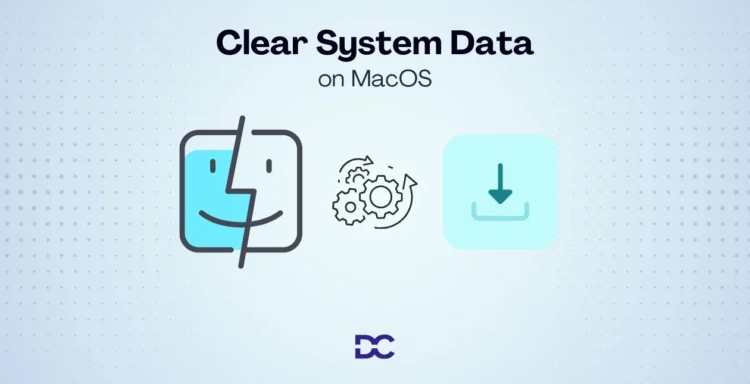Unless you have purchased a Mac with plenty of storage, you might sometimes run out of space. Thus, you might need to clear the space often. However, when trying to clear the space, you might have spotted “System Data.” Do you know what’s inside? Reading this segment will help you find all the information related to system data and the complete process of clearing it.
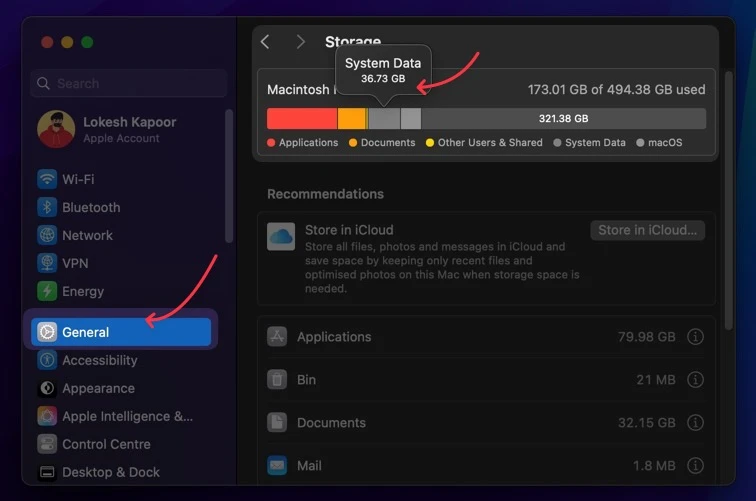
What is System Data?

macOS includes system data, which refers to the files that include browser caches, application caches, disk images, system log files, extensions, plugins, and a lot more. In simple words, the files that do not belong to the documents, apps, music creation, music, pictures, and other categories on Mac storage are present in System Data.
To check your system storage, you need to head to the Apple Menu, followed by the About This Mac tab, and later, navigate to the Storage tab. Once you are done with that, hover the cursor over each segment of the storage bar to find what they represent. You will see the storage split into categories like System, Apps, and Photos.
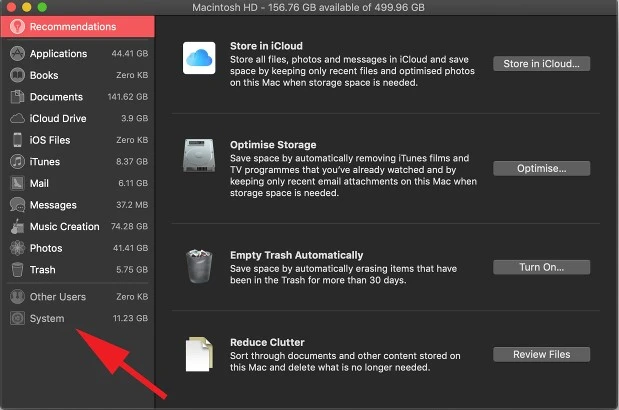
Usually, the system category takes around 10GB of space. However, in certain situations, the system storage occupies up to 100GB of space or even more. Well, that can be quite confusing. The reason behind this can be that the Mac builds up an unnecessary amount of system files due to a bug. Or it can be a regular part of the OS working procedure.
Even though the system data takes up a lot of space, Mac usually removes the system files that aren’t required anymore. However, if that doesn’t happen, then performing steps manually is the only option left.
Steps to Manually Clear System Data on MacOS
To make space in your MacOS, you might have to follow the steps below to clear System Data manually. Let us explore together!
Empty Trash
One of the most essential steps is to empty the trash. We usually miss out on the files in the Trash, and they pile up, becoming a large segment of the System Data. Thus, emptying the trash is one of the initial steps you need to take. This can be quickly done using the steps below:
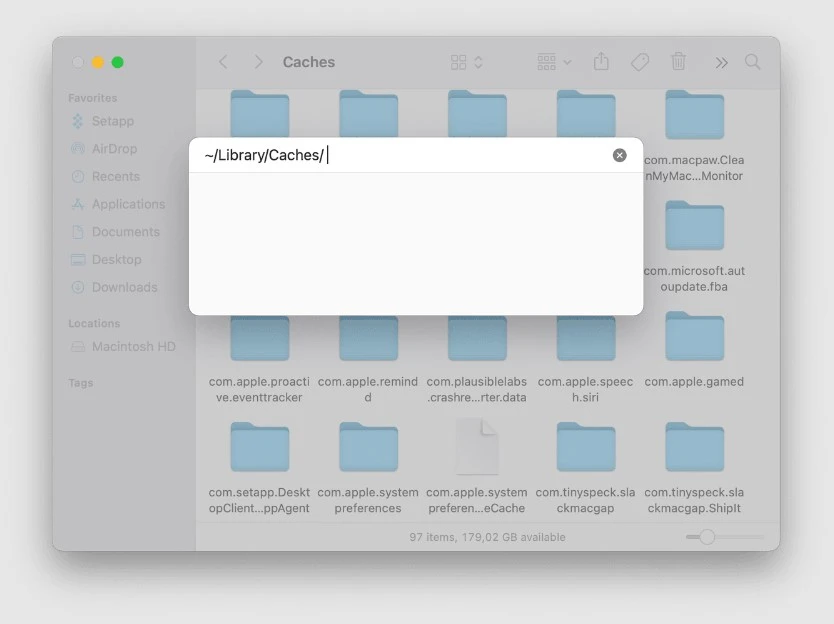
- You need first to click and hold the trash icon on the dock
- Now, this will open up a pop-up stating Empty Trash
- Choose the option
- Or empty the Trash by opening Finder by holding the command and shift
- Choose to delete
- However, if you wish to set up empty trash automatically, simply head to the finder and select the preferences tab. Also, go to the advanced tab and then checkmark the items removed from the trash after 30 days.
Work on Time Machine Backup
There is a common misconception that the Mac Time Machine backup is only stored on the external drive. However, it works by using both remote storage devices and local disks for backups. Thus, manually deleting the time machine backup is highly recommended. You can delete the backup using the steps below:
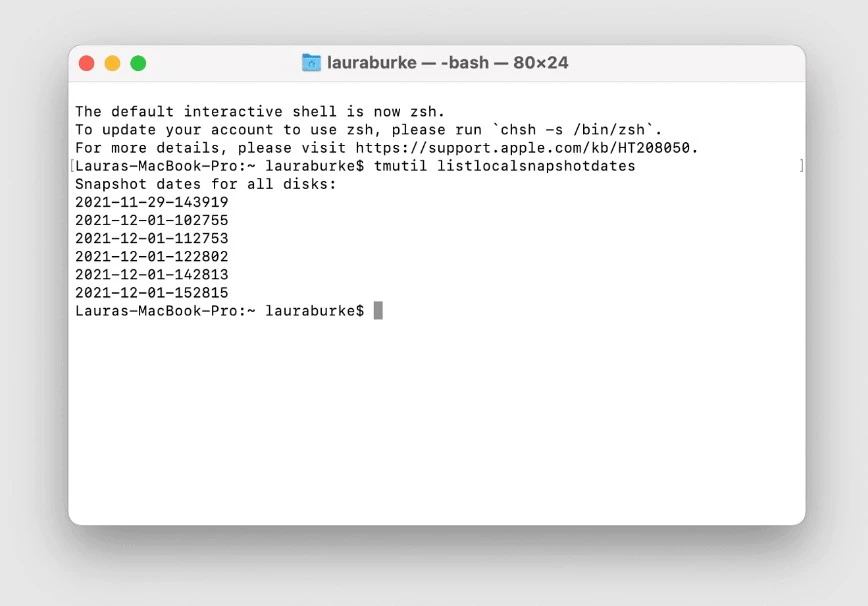
- At first, launch the terminal from the spotlight
- Enter tmutil listlocalsnapshotdates
- Click on Enter tab
- Check the list of all the Time Machine backup files stored on the local disk
- Delete them according to the date
- Head back to the terminal and enter tmutil delete local snapshots
- Delete them by clicking on enter
- Perform the steps till the system storage space is acceptable
Optimizing the Storage
Apple has equipped the MacOS with some of the basic features to optimize the space. Heading to the Apple and About This Mac section and opting for the Storage and Manage tabs would help in optimizing the storage. The recommendations sections therein would help reduce the system data storage on Mac by removing unwanted files. The below instructions can help in optimizing the storage:
- You need to click on Apple.
- Furthermore, click on About this Mac.
- Followed by selecting the storage tab
- Also, click on the Manage option
Using CleanMyMac App
You can use the CleanMyMac app to reduce the clutter and delete unwanted applications and files. It can help you reduce the size of system data and optimize it to its fullest. Not only that, there are tons of other features in the latest and upgraded CleanMyMac app that you can utilize to make your Mac device buttery smooth.
Remove iOS Backups
Even the accumulated iOS backups can block a significant chunk of your system storage files. Thus, you need to evaluate and remove the unwanted iOS backups and make room in your storage. Here are the steps that you can perform to remove the iOS backups.
- Head to the Apple menu
- Now, navigate to the About This Mac
- Once done with that, select the Storage tab and Manage tabs, respectively
- Moreover, this will open the storage management window
- Move to iOS files, and there, all the iOS backups will be listed by time and size
- Or choose Delete Backup to save space for the system files
Removing Cache Files
Whenever we make use of applications on Mac or visit websites, caches are generated, and too much of old caches tend to be a burden on data storage. Removing useless cache files can help clear space on a Mac. To eliminate the cache files or the temporary files, you can perform the following steps:
- Initially, you need to open Finder and then head to the folder
- Followed by entering in /Library/Caches/ and hit a click on the Go tab
- This will open up the caches folder, where you can opt for the files you wish to delete
Updating macOS
Keeping the MacOS up-to-date is a key to smooth working. Note that if you have downloaded an update to your Mac and haven’t installed it, then it might take a lot of space on your hard disk. Whereas, when you update your Mac, it will clear the system storage on the Mac. Updating the OS also removes the bugs occupying space and affecting the software’s working.
FAQs
What is System Data on macOS?
System Data (previously called “Other” storage) includes temporary files, caches, logs, and other background data that apps and the system use to function smoothly. Over time, this data can take up a lot of space on your Mac.
Why should I clear System Data on macOS?
Clearing System Data can free up storage space and help improve your Mac’s performance. It also helps remove unnecessary files that your system no longer needs, making your Mac run faster.
How do I check how much space System Data is using on my Mac?
You can check your Mac’s storage usage by going to the Apple menu > “About This Mac” > “Storage.” Here, you’ll see a breakdown of how much space is taken up by System Data and other categories like Apps, Documents, and Photos.
What happens if I don’t clear System Data?
If you don’t clear System Data, it will keep building up and can take up a significant amount of storage space over time. This can slow down your Mac and make it harder to store important files or install updates.
Can I delete log files to clear System Data?
Yes, log files are part of System Data and can be deleted. These files are usually found in the ~/Library/Logs or /Library/Logs folders. Deleting old log files can free up some storage.
What should I do if System Data is taking up too much space?
If System Data is using up too much space, you can try clearing caches, deleting unused apps, and removing large files that you no longer need. You can also use a cleaning app or consider upgrading your storage if needed.
Can I clear System Data with third-party apps?
Yes, you can use third-party cleaning apps like CleanMyMac or DaisyDisk to safely remove System Data. These apps can help identify and delete unnecessary files, making it quicker and easier for you to free up space.
Does restarting my Mac help clear System Data?
Restarting your Mac can help clear some temporary system files, but it won’t remove all System Data. To fully clear unnecessary data, you may need to manually delete files or use a cleaning app.
Does updating macOS clear System Data?
Updating macOS may automatically remove some temporary files, but it won’t completely clear all System Data. You may still need to clear it manually or use a cleaning app after an update.
Conclusion
MacOS is notorious for having little storage space, but performing the steps we have elaborated on in this segment might help you with the space issue in Mac to a great extent. I hope the procedures discussed help you free up space in your Mac quickly!

